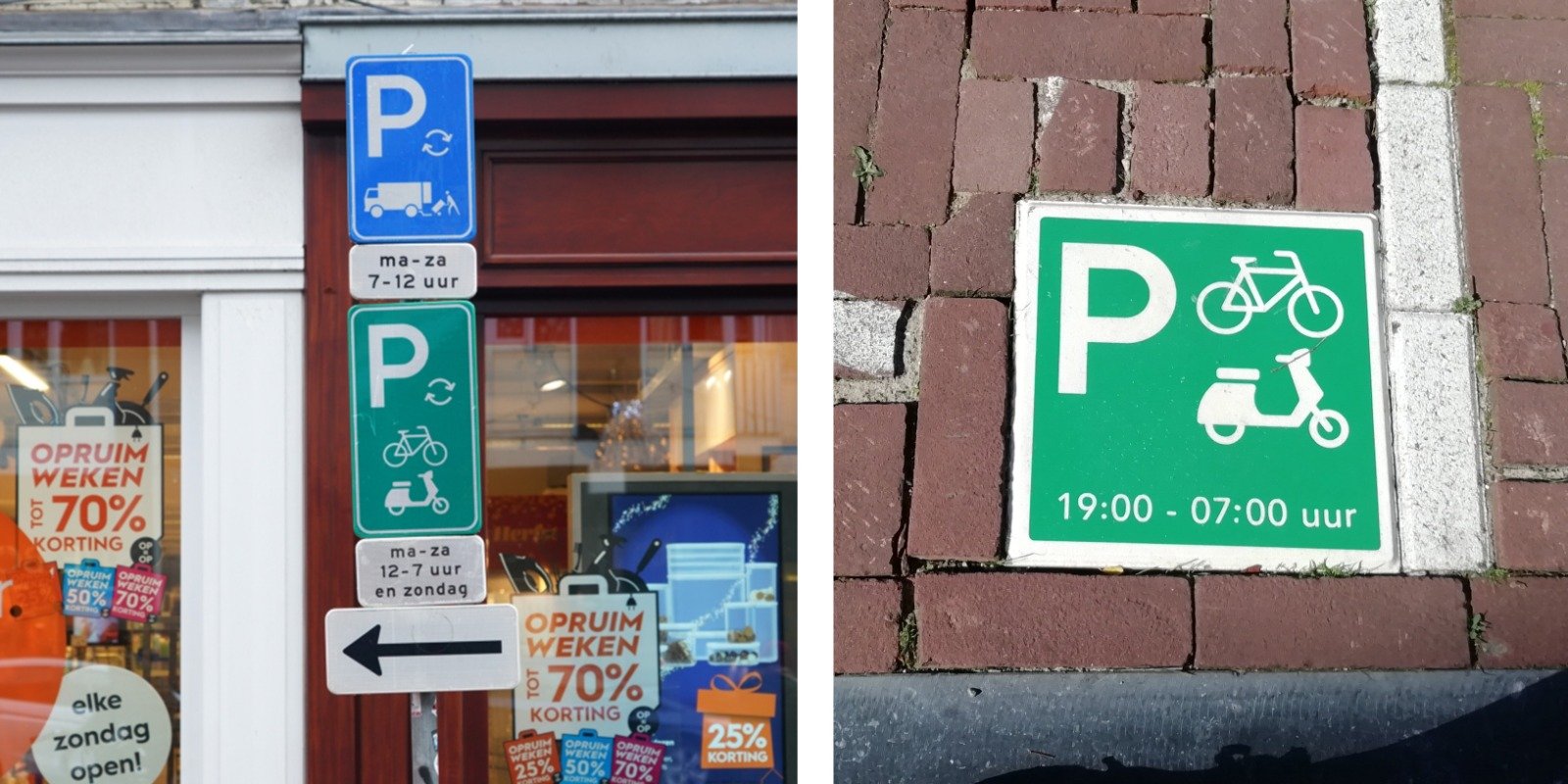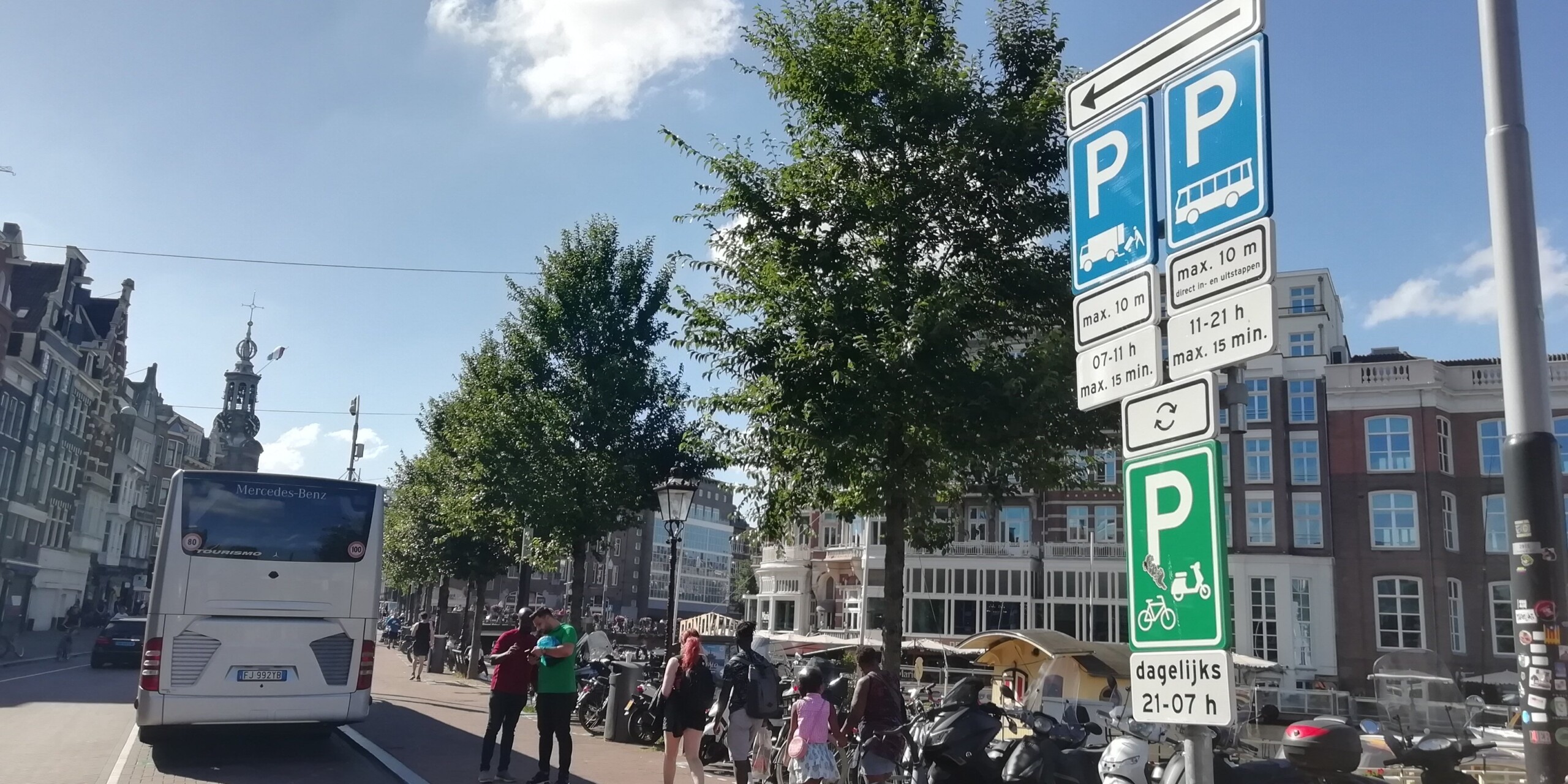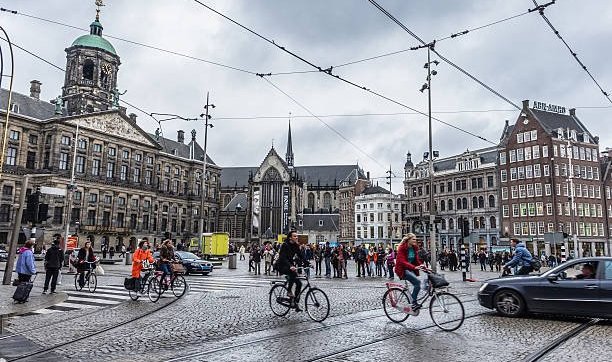The idea for these so-called ‘dual-use locations’ arose in 2017 in the Gerard Doubuurt, an area with many shops, restaurants, homes and little public space. “This idea came from people in the neighbourhood,” says Devi van Huijstee, bicycle parking advisor at the city municipality of Amsterdam. “They told us that loading/unloading places were empty in the evenings and suggested to let bicycles and scooters be parked there in those hours.”
This idea has now been further developed and can be seen in more places in the city. Most are at loading/unloading places, but boarding points for coaches and taxis are also double used with bicycle parking.
Green is the colour for bicycle parking
It is important to introduce the scheme properly, says Van Huijstee. ‘People don’t always understand it straight away.’ Both functions (loading/unloading and bicycle parking) will have a special traffic sign showing the times at which these functions are permitted. That means quite a lot of plates.
When introducing the scheme, the municipality seeks entrepreneurs to collaborate with. These entrepreneurs are often the parties for whom suppliers come and who also benefit from customers coming by bicycle. At the start of the scheme, the entrepreneur will place a beach flag, indicating when bicycles are allowed to be parked. This is continued for several weeks until visitors get used to it.
Van Huijstee: ‘Green is the colour for bicycle parking in Amsterdam, so we have green beach flags, green signs and a green printed tile in the street. That makes it recognisable.’




